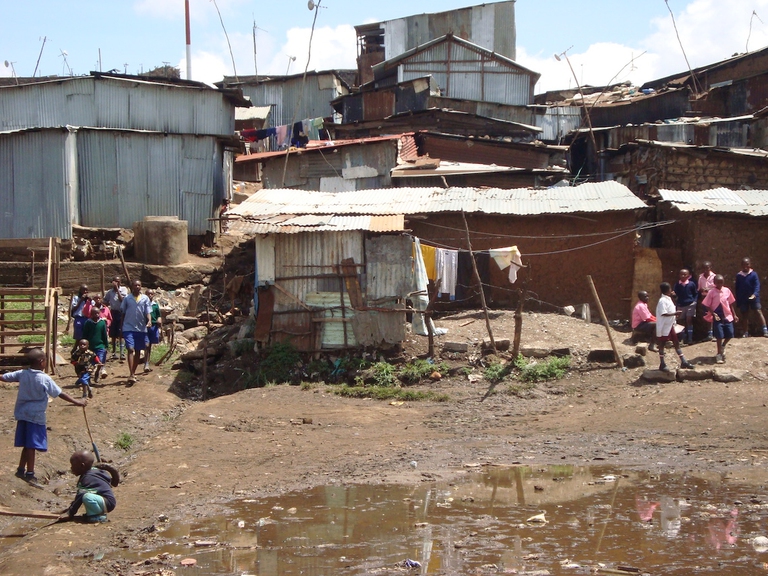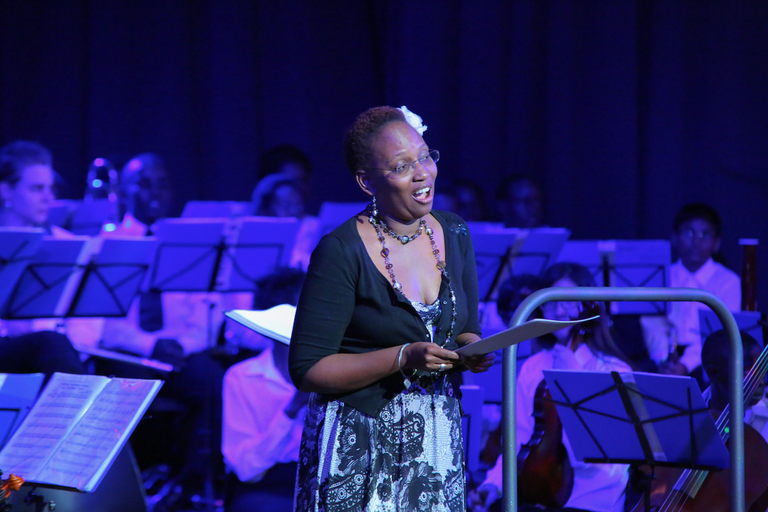
Renzo Piano’s archive in Genoa houses the great architect’s projects. It brings young people closer to creative work, which he equates to “looking into darkness without fear”.
Korogocho, Kenya, is Nairobi’s third slum. It rises on the huge mountain of trash of Dandora landfill (the capital’s biggest dumpsite) and about 200,000 people live there in tin sheds built on an area of approximately one and a half square kilometers. Unlike Muthaiga, one of Nairobi’s wealthiest areas located less than two kilometres away from
Korogocho, Kenya, is Nairobi’s third slum. It rises on the huge mountain of trash of Dandora landfill (the capital’s biggest dumpsite) and about 200,000 people live there in tin sheds built on an area of approximately one and a half square kilometers.
Unlike Muthaiga, one of Nairobi’s wealthiest areas located less than two kilometres away from Korogocho, extreme poverty eradicated in the slum: alcohol and drug abuse go hand in hand with the spread of HIV and AIDS, domestic violence is a common occurrence and loan-sharking is a major issue.
Korogocho is a place where children are obliged to grow up too fast and teenagers often turn to crime. And it was also to break the link between poverty and crime and offer children a means of escape from disgraceful situations in the slum that Elizabeth Njoroge, in 2008, decided to establish the Ghetto Classics Orchestra.
“Playing music makes you forget the world around you. Troubles can be left behind and there is room again to focus on the positive things in life”, Elizabeth Njoroge says. Music also gives the poorest children the skills to overcome their daily challenges: “If you can master an instrument, you can master life”, she adds.
Elizabeth was born in Nairobi. In her childhood she developed a passion for music and when she was four she started to take piano lessons. As an adult she moved to Canada and then to the United Kingdom to pursue her other passion: medical disciplines. She obtained a degree in biochemistry and pharmacy, but she has given up on her passion: music. At some point in her life she also thought of embarking on a career as professional musician, but she told the New York Times: “I did not have the guts”.
When Njoroge went back to Nairobi in 2003, she was struck by the fact that there were few music initiatives and that only white people had access to music schools. In 2007 Njoroge started to host a programme of classical music in a local radio and came to understand that more people than she thought were interested in classical music, even those who aren’t members of the wealthy white community.
In 2008 Njoroge decided to launch the programme Ghetto Classics in order to provide young people living in the slum of Korogocho and in the poorest areas of Kenya’s capital with musical education. At first only 14 children attended the classes that were given twice a week and Kenya’s Conservatoire of Music made available the instruments to them. But then, thanks to donations, the orchestra has managed to buy enough instruments.
In 2013 the orchestra made a big step forward: Njoroge decided to welcome children living in harsh conditions as well as privileged children into the Ghetto Classics Orchestra. From that moment on the orchestra has become a means for promoting social integration (and transformation) in a country where socio-economic inequalities are really marked.
Today, the Ghetto Classics Orchestra is part of a larger project, Art of Music Foundation Kenya, that was launched in 2009 to enrich the lives of Kenyan youngsters with music; more than 80 children who consider the orchestra a second home as well as other 600 children coming from the slum of Korogocho and other five poor communities of Nairobi participate in the Ghetto Classics programme. A few months ago the programme expanded to the coastal city of Mombasa.
The orchestra performed for Kenya’s President Uhuru Kenyatta and for Pope Francis; its repertoire includes the main theme of the film Pirates of the Caribbean composed by Hans Zimmer, Miriam Makeba’s hits. Many international musicians (including Branford Marsalis, Kirk Whalum and Salif Keïta) went to Korogocho to give master classes and the Grammy-award winning saxophonist Mr. Whalum was so inspired by the Ghetto Classics orchestra that he told he wanted to write an original composition for the orchestra.
The Ghetto Classics Orchestra is another demonstration that music is a powerful means of social transformation that promotes a fair society, where individuals of different race and from different communities become a single entity with the goal of “playing” and living in harmony.
Siamo anche su WhatsApp. Segui il canale ufficiale LifeGate per restare aggiornata, aggiornato sulle ultime notizie e sulle nostre attività.
![]()
Quest'opera è distribuita con Licenza Creative Commons Attribuzione - Non commerciale - Non opere derivate 4.0 Internazionale.
Renzo Piano’s archive in Genoa houses the great architect’s projects. It brings young people closer to creative work, which he equates to “looking into darkness without fear”.
The 50th anniversary of the Moon landing on 20 July has awakened the fantasy of many. Here’s the perfect playlist of musicians who have let themselves be inspired by the universe and its celestial bodies.
N’we Jinan is a Canadian record label that gives First Nations students their voice back by allowing them to create their own music in mobile recording studios.
The Australian songwriter, who became famous with Follow the Sun, is back with Walk Away, a new and powerful ode to freedom. He’s about to set off on a world tour. Our interview with Xavier Rudd.
Three teenagers from New Zealand sing in the Maori language about abuse at the hands of British colonisers. Thanks to their thrash metal music, young people are being attracted to native culture.
There’s no room for anger, resignation, or desire for revenge in this playlist. There’s just the moral obligation of retracing and telling the stories that can’t go lost and forgotten all over again. We do so through music.
Le canzoni più belle del 2017 secondo LifeGate Radio. Con questa playlist lanciamo la nostra collaborazione con Spotify Italia che vi farà ascoltare la musica migliore, selezionata.
An organisation that unites over 1,000 mainly Maya women in Guatemala has expressed alarm that indigenous handicrafts, textiles called “huipiles” in particular, are under threat because underpriced industrial fabrics appropriating indigenous patterns have flooded the Guatemalan market, depriving many native women of their main source of income. Read more: Down to Xjabelle, the fashion collection by a young designer with Down
Rwandan creatives share a common dream: they want to use their art to bring about positive change in society, as well as put their country on the map. They’re mostly young, ambitious, self-taught and have a strong desire and determination to challenge mentalities, move forward and grow. In her documentary RWANDArt: A new creative generation, which









